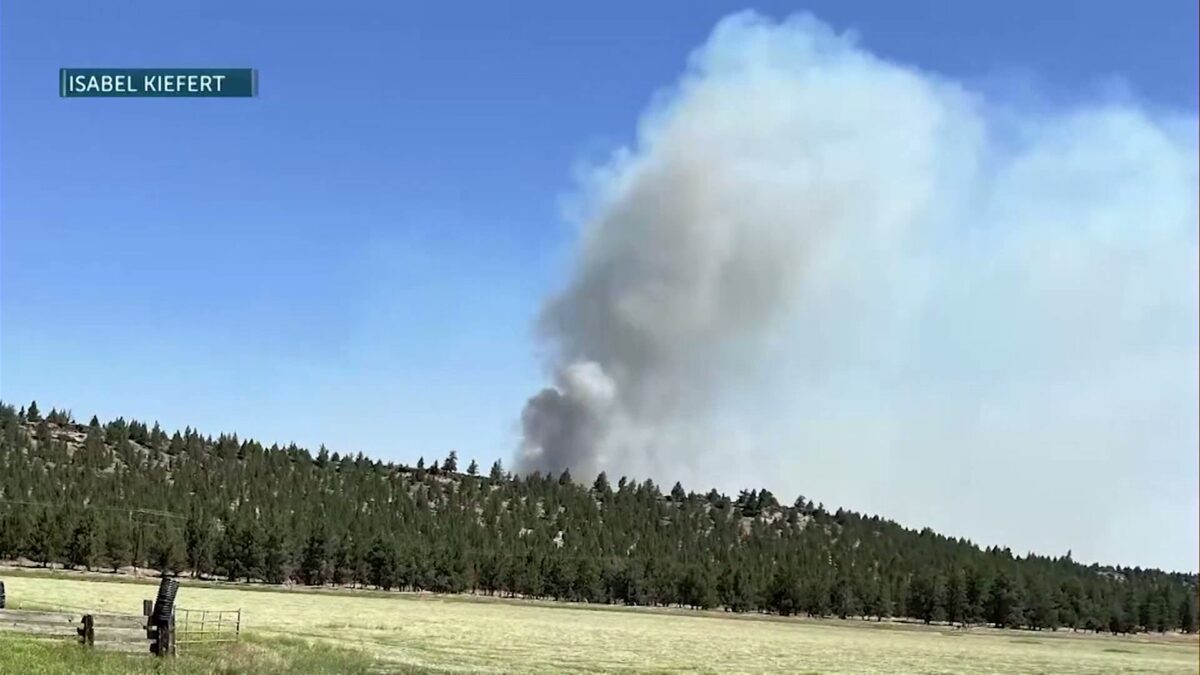Oregon DEQ talks about wildfire smoke’s effects, and how to minimize your risk

Claire Elmer
(Update: adding video)
BEND, Ore. (KTVZ) — As the Alder Springs Fire blazes on in Central Oregon, its smoke is starting to affect our air quality.
The Oregon Department of Environmental Quality works with the Oregon Health Authority, along with other local agencies, to review fire behavior and determine its effects on air quality.
KTVZ News spoke with the DEQ on Tuesday about the Alder Springs fire, as well as how you can minimize the impact smoke has on your health.
Jennifer Horton, air quality coordinator for the DEQ, told KTVZ regarding the Alder Springs Fire, “It looks like that smoke is staying more local to the fire, at this point. We’re continuing to monitor that situation, and make sure that if there are going to be communities impacted by smoke, that we’re prepared to send that message out.”
The air quality index (AQI) is measured by particulate matter (PM). The number that follows ‘PM’ is a particle’s width in micrometers. PM 2.5 — about the size of a human hair — is considered the most dangerous as it can be inhaled deeply into lungs and into the bloodstream. That is the most concerning particle size for negative health effects, and it’s the component in smoke.
Many parts of Central Oregon have unique geography that can affect how smoke travels in certain areas.
“There are some river valleys in Central Oregon. As temperatures cool overnight, a lot of times smoke is pulled back down those river drainages towards communities,” said Horton.
If you are noticing smoke during the day, be sure to keep windows and doors closed at night, to lessen the impact.
Running your air conditioner will help filter the air within your home. Filters with a Merv rating 13 or higher will catch smoke particles, but ensure that your system can handle the strain first. If you do not have an air conditioner, the DEQ recommends air purifiers or creating your own filtration device with a box fan and filters.
The most beneficial thing you can do to protect yourself is to stay informed. KTVZ News Weather App is available free on the Google Play Store and Apple Store. It is consistently updated with fire and air quality alerts.
You can also check Central Oregon Fire’s website or Oregon’s AirNow. We also have an E::Space air quality map on the KTVZ.COM Weather page.
Limiting outdoor activities, especially strenuous, is also key. If you need to be outside, try to time your exposure to the lowest AQI level.
Chris Varley, a public information officer for DEQ, told KTVZ News, “Things can change really quickly. The air quality monitoring we have set up is designed to provide near-real-time information to Oregon residents. Paying attention to it helps you figure out a good time to maybe take the dog for a walk, or not.”
DEQ stresses how seriously they take their air quality ratings and alerts, especially during fire season.
Varley said, “It’s so much coordination work because air quality advisories often trigger different actions by our local partners. We want to make sure that they’re out and starting that process. We give residents the most information we can, so they can limit their exposure. The dog is going to need to go out for a walk, but there might be a better time to do that.”
For high-risk groups such as the elderly, very young, outdoor workers, or those with a pre-existing condition, keeping track of the AQI is even more critical. For those who require medication, ensure you have it refilled and on hand.
No matter your risk level, if you believe you are experiencing symptoms due to smoke, immediately contact your health care provider.